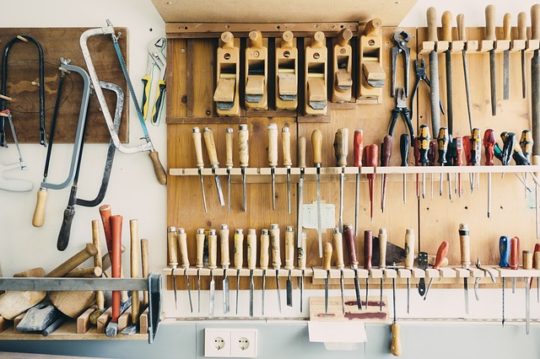
While most newly built homes have garages, many older properties throughout the country lack garages or permanent outdoor storage spaces. If you find yourself in a situation where you lack a garage, you face a unique set of factors. The only way to overcome this disadvantage is to get creative.
4 Ways to Survive Without a Garage
The first attached garages emerged in American home construction in the 1920s, but it wasn’t until the 1930s and 1940s that they become popular. By the 1970s, most new construction homes in middle and upper-class neighborhoods were being built with garages – though ranch homes and other styles commonly went with carports instead. Today, you’ll occasionally find new homes built without a garage, but it’s quite rare.
If you own a home that was built in the 20th century, it’s entirely possible that you lack a garage. While this isn’t the end of the world, it certainly presents some inconveniences. Not only does this leave your vehicle exposed to the elements, but it also limits the storage space you have for things like lawn equipment, outdoor toys, tools, and garden supplies.
For homeowners without garages, there are some workarounds. Let’s explore some of the options so that you can come up with a strategic game plan:
- Portable Garages
Few things will cause as much wear and tear to a vehicle’s exterior as exposure to the elements. Everything from sun and wind to rain and hail will fade, chip, and dent you’re your paint job – potentially knocking off thousands of dollars in resale value.
Sometimes you just need a way to protect your vehicle from the elements. The most cost-effective solution for homeowners without garages is to use a portable garage. High-quality portable shelters can be purchased for a few hundred dollars and be easily assembled and dissembled for temporary use during certain seasons or periods.
- Backyard Sheds
If your primary pain point is not having space to store outdoor items – such as lawn equipment or tools – then you may want to look into a backyard shed. With a shed, you get secure storage space that’s sturdy and safe from the elements. You can even buy a shed that matches the siding of your house so that it doesn’t stick out like a sore thumb.
- Rented Warehouse Space
Do you need a bunch of space for storing equipment? Or do you have a hobby that requires a bunch of room to work – such as building engines or doing woodworking? In these situations, a portable garage or backyard shed might not be your best option. Instead, you can look into renting warehouse space.
Depending on where you live and what rates are like in your area, empty warehouse space may be a cheap and convenient way to acquire extra space without doing anything to your existing property.
- Crawl Space Storage
Do you have a crawl space underneath your house? If it’s high enough for you to stand or crouch, it may be suitable for storing certain outdoor items. If you do choose to go this route, consider sealing off the crawl space, or at least throwing down an extra vapor barrier. This will prevent your stuff from excessive exposure to the elements (which often have a way of seeping into the crawlspace).
Is a Garage Addition Possible?
As this article shows, there are plenty of ways to get around not having a garage. However, there’s certainly something to be said for having one. If you feel like you need a garage, look into the possibility of an addition to your home.
Because of all the variables – including space, location, materials, etc. – it’s hard to provide an accurate estimate of how much an attached garage addition costs. However, according to Fixr.com, you’re likely going to land somewhere in between $7,500 and $27,040.
Every homeowner can’t justify spending this amount of money on a garage, but if it helps, think of it as an investment. Depending on the neighborhood you’re in, and what features comparable homes have in your area, you should recoup a large percentage of the garage addition when you eventually sell the house. So from this perspective, it’s not nearly as costly.























